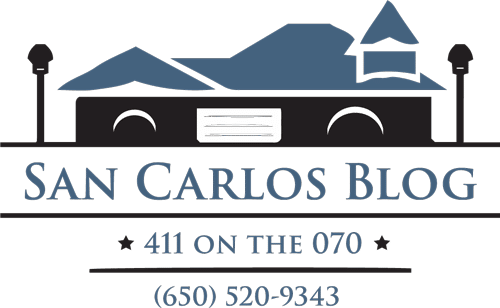
The Preliminary Title Report
Mixed in among the hundreds of pages of disclosures that will come along with your San Carlos home is one very important document that is frequently overlooked, underrated and rarely given the level of scrutiny that it truly deserves. This document is known as the Preliminary Title Report (PTR). The PTR is given in most disclosure packages in San Carlos. At its core, it is a representation to the buyer that the title company will be able to issue title insurance on the property in question. Any San Carlos buyers purchasing property in San Carlos with a lender will be required by the lender to buy a title insurance policy for themselves and one for the bank as well. A title insurance policy essentially guarantees your title/ownership to the property once the purchase is complete. It insures against anyone else making a claim that they perhaps have an interest in the property once it is transferred. On its face, the PTR can seem fairly ordinary. It never gets the attention that the Transfer Disclosure Statement, Seller’s Supplemental Checklist or inspection reports get, but it should….and here’s why:
The PTR Discloses More Than Insurability
The PTR is more than an indication that the prospective title is insurable. In fact, it contains many crucial items that will not be found anywhere else in your disclosure package. Here is just a sampling of some the items you may glance right over, mixed in with the insurance language:
Liens. The PTR will show a complete list liens filed against the property. This means you will be able to see the original balances of any mortgages taken out on the property. Those types of liens are expected and can give you an indication of perhaps what the seller owes on the property. However, really what you are looking for here are unexpected liens. Liens due to a judgment against the seller, IRS liens, child support liens and liens by the State of California for unpaid taxes and property taxes. If any one of these types of liens were to show up on the PTR, special attention must be paid to them by the escrow officer, the buyer and the agents. The last thing you want is for any of these liens to survive the deed transfer. Not that the new buyer would necessarily be responsible for paying them, but they could be a major headache to have removed properly and could impact your later ability to refinance and sell the property. Finally, remember that these unexpected liens are not in bold type with arrows pointing to them on the PTR. They are buried in other standard language on the report and you have to look carefully to see them.
CC&Rs. Otherwise known as Covenants, Conditions and Restrictions. CC&Rs are attached to almost every property in San Carlos. Most people think that CC&Rs only come along with condos, town homes or other common interest developments, and this is not the case. If a particular property is subject to CC&Rs, you will see a notation on the PTR. It is important to distinguish that the CC&Rs themselves will not be detailed on the PTR, but rather only the notation, letting you know that they exist. The vast majority of buyers will glance right over this. You should take the secondary step of having the title company actually pull the CC&Rs, which will be public record because they are recorded against the property. Now, the vast majority of CC&Rs for San Carlos single family homes are not only invalid, but somewhat offensive. Many of the CC&Rs filed against single family homes in San Carlos were put into place 70 years ago when much of the building in San Carlos was just starting. If you were to read them carefully you would see language in the CC&Rs that basically says only white males could own property within the city limits. Thankfully, we have come along way since then and those types of restrictions are obviously illegal. However, there are a few areas in San Carlos where, every so often, valid CC&Rs are still on the books. Often times, many homeowners are stunned to learn they are even in existence. These types of CC&Rs can govern things such as: the color you can paint your house, the type of remodel you can attempt, placement of items such trees, mailboxes, etc. Again, the neighborhoods that these CC&Rs affect are most likely completely unaware that they are actually on the books, but it just takes one neighbor to realize it and decide they want to enforce it.
Negative Covenants. These are rare, but they exist. When most properties are transferred in San Carlos, the type of ownership bestowed upon the new owner is something called a Fee. A Fee basically means that the owner commands absolute ownership over the property, subject only to restrictions of CC&Rs, the city, county and state. However, a negative covenant means that the particular property is something less than a Fee because there is a negative covenant running with the land. Running with the land, essentially means that whatever the condition is, will remain with the land through future sales until it is removed by the person or parcel that the negative covenant is benefiting. Here is a good example of a negative covenant: Owner A has a property below Owner B on a hillside. Owner B decides to pay Owner A $50,000 for a negative covenant, stating that Owner A will keep his trees trimmed to not obstruct Owner B’s view. Once recorded on title, Owner A’s title is now subject to a negative covenant. When Owner A sells his property, new Owner C will be subject to the negative covenant.
Easements. An easement recorded against your property means that you are giving someone a license to come onto your property. Most San Carlos properties will come with easements for PG&E or other utility companies to come onto your property if they deem it necessary. These are normal and to be expected. A red flag should immediately go up if you see an easement on the PTR that is not to a utility company, but rather for the benefit of an individual. The last thing you want is to see a personal easement for Joe Smith to use your property as an ingress/egress route. Believe it or not they exist. Again, most property owners, as well as owners of the easement, will not know of its existence because they did not read the PTR carefully enough. But again, it just takes one person to notice it and you could have a problem. Same as the other items above, easements are mixed in among other very ordinary language on the PTR. Read it carefully.






Leave A Reply